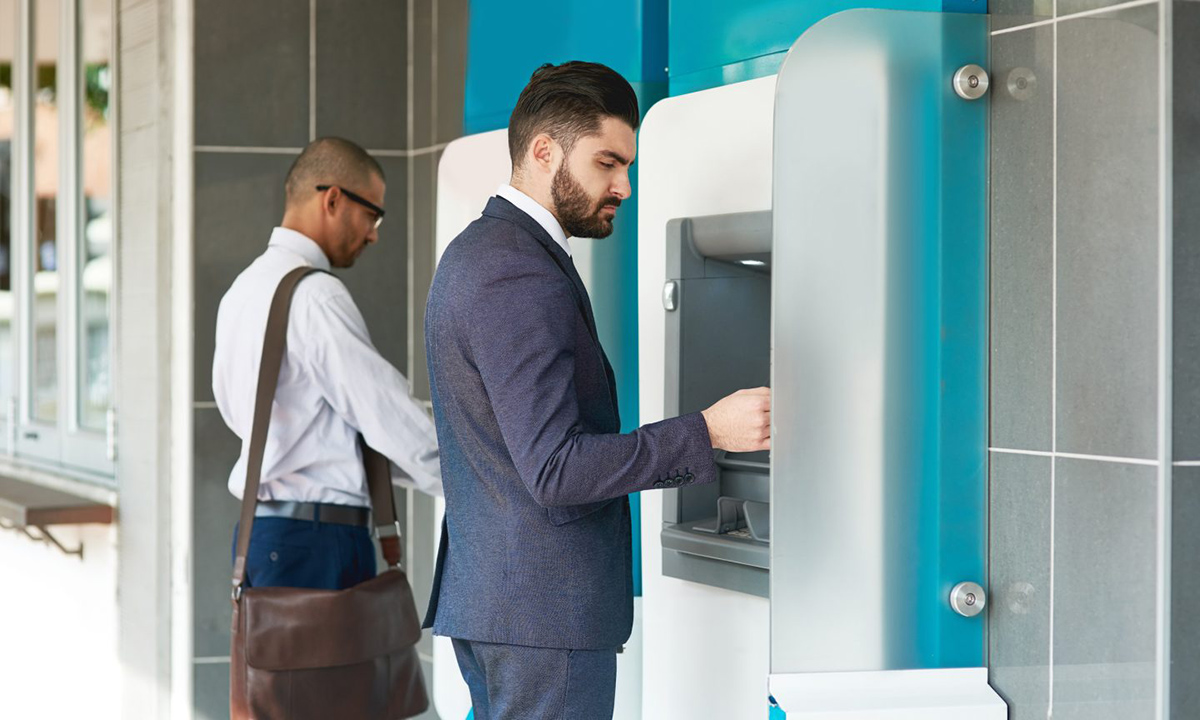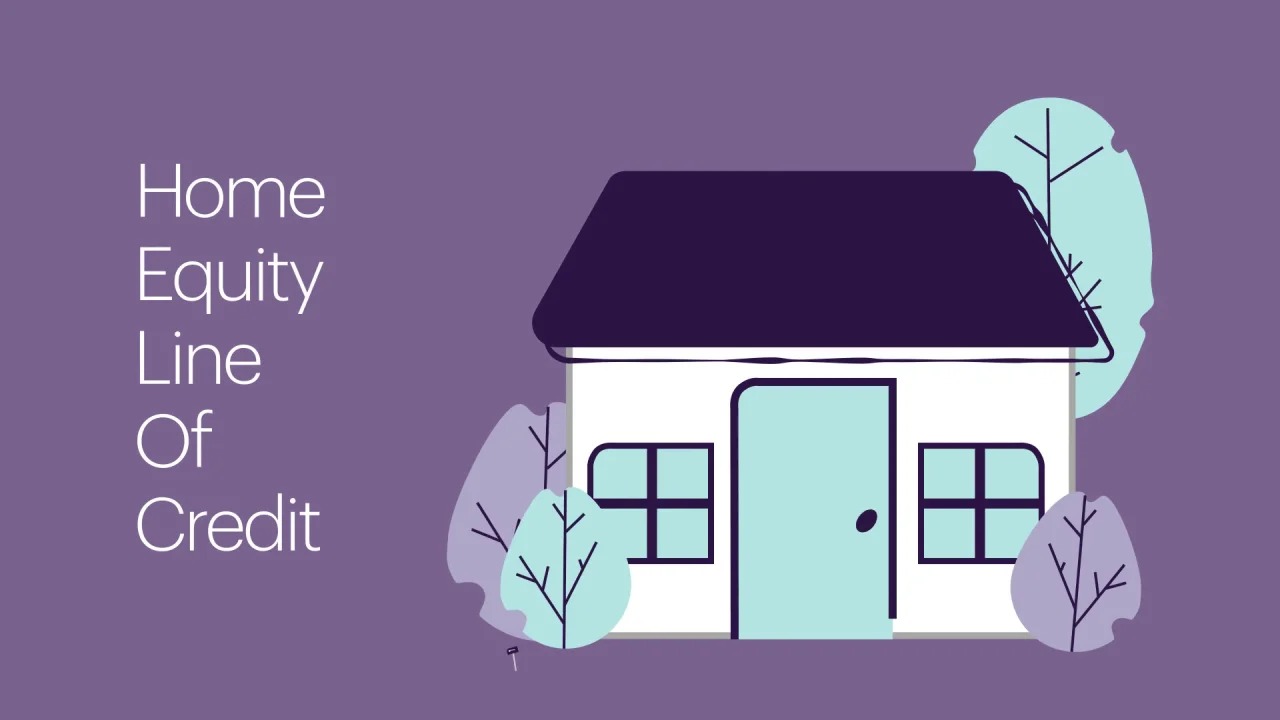Home>Finance>What To Do If You Lose Your Health Insurance Card


Finance
What To Do If You Lose Your Health Insurance Card
Modified: February 21, 2024
Learn what steps to take if you lose your health insurance card. Get essential financial tips to navigate through this challenging situation and protect your coverage.
(Many of the links in this article redirect to a specific reviewed product. Your purchase of these products through affiliate links helps to generate commission for LiveWell, at no extra cost. Learn more)
Table of Contents
- Introduction
- Understanding the Importance of Your Health Insurance Card
- Contacting Your Health Insurance Provider
- Requesting a Replacement Card
- Utilizing Digital or Electronic Insurance Cards
- Temporary Coverage Options
- Keeping Track of Your Health Insurance Information
- Taking Precautions to Prevent Future Loss
- Conclusion
Introduction
Having health insurance is essential for maintaining your well-being and accessing necessary medical treatment. It provides financial protection and ensures that you can receive the care you need. Your health insurance card is a vital document that verifies your coverage and facilitates the billing process when you visit healthcare providers. However, there are instances where you might misplace or lose your health insurance card, causing concern and uncertainty about what to do next.
In this article, we will guide you through the steps to take if you find yourself in a situation where you have lost your health insurance card. From contacting your health insurance provider to exploring temporary coverage options, we will provide you with the necessary information to navigate this situation with ease.
Dealing with the loss of your health insurance card can be stressful, but it’s important to remember that there are solutions available to ensure you maintain access to healthcare. By following the proper procedures and taking preventative measures, you can overcome this inconvenience and continue receiving the benefits of your health insurance coverage.
Understanding the Importance of Your Health Insurance Card
Your health insurance card is a key document that verifies your enrollment and coverage with your health insurance provider. It serves as proof of insurance when you visit doctors, hospitals, and other healthcare providers. Understanding the importance of your health insurance card and its role in accessing healthcare is paramount.
First and foremost, your health insurance card is necessary for healthcare providers to confirm your eligibility for services. When you present your card, providers can verify that you are an active member of the insurance plan and determine the coverage and benefits you are entitled to. This helps to ensure accurate billing and prevents any potential confusion or delays in the payment process.
In addition to its role in verifying your coverage, your health insurance card contains important personal information. It typically includes your name, policy number, group number, and the contact information of your insurance provider. This information is vital for healthcare providers to accurately identify you in their systems and maintain accurate medical records.
Furthermore, your health insurance card plays a vital role in emergency situations. In the event of a medical emergency, having your card readily available can expedite the registration process and ensure that you receive prompt medical attention. It enables healthcare professionals to quickly access your insurance information and makes it easier for them to communicate with your insurance provider in case of any pre-authorization requirements.
Lastly, your health insurance card may provide access to additional benefits and services. Many insurance plans offer health and wellness programs, prescription drug coverage, and other resources to help you manage your health. By presenting your card, you can take advantage of these additional benefits and ensure you receive comprehensive care.
Given the importance of your health insurance card, it is crucial to keep it safe and readily accessible. However, if you happen to misplace or lose your card, it is essential to take immediate steps to address the situation and ensure you have the necessary means to access healthcare. In the next section, we will explore how to contact your health insurance provider to request a replacement card.
Contacting Your Health Insurance Provider
If you find yourself in a situation where you have lost your health insurance card, the first step is to contact your health insurance provider. They will be able to guide you through the process of obtaining a replacement card and provide any additional information or assistance you may need.
Start by locating the customer service contact information for your insurance company. This can usually be found on their website, on the back of your previous insurance card, or in the policy documents you received when you enrolled in the plan. Once you have the contact information, reach out to them via phone or email to report the loss of your card.
When contacting your health insurance provider, it is important to have your personal details readily available. This includes your full name, policy number, and any other relevant information they may request to verify your identity and eligibility. Providing this information will help expedite the process and ensure that the replacement card is issued to the correct policyholder.
During your conversation with the customer service representative, explain that you have lost your health insurance card and need a replacement. They will guide you through the necessary steps to request a new card. In some cases, the provider may be able to issue a temporary card that can be used until the replacement card arrives.
Depending on your insurance company’s policies and procedures, there may be a fee associated with requesting a replacement card. The representative will inform you of any fees and the payment methods available. In some cases, insurance providers may waive the fee for the first replacement card or under certain circumstances, such as theft or damage.
Once you have reported the loss of your card and requested a replacement, the insurance provider will usually process your request within a specified timeframe. They will mail the new card to your address on file, so it is important to ensure that your contact information is up to date. If there are any delays or issues, the customer service representative will assist you in resolving them.
Overall, reaching out to your health insurance provider is a crucial step when you lose your health insurance card. They have the knowledge and resources to help you navigate this situation and ensure that you have the necessary documentation to access healthcare services. In the next section, we will discuss the process of requesting a replacement card in more detail.
Requesting a Replacement Card
Once you’ve contacted your health insurance provider to report the loss of your card, the next step is to request a replacement. This process may vary depending on your insurance company’s policies and procedures, but generally, it involves submitting a request either online, over the phone, or through a written application.
If your insurance provider offers online services, such as a member portal or mobile app, you may be able to request a replacement card digitally. Log in to your account, navigate to the appropriate section, and follow the instructions to initiate the request. This method is often convenient and efficient, providing you with immediate confirmation of your request.
If online options are not available, you can request a replacement card over the phone. Call the customer service number provided by your insurance provider, explain the situation, and request a new card. The representative will guide you through the necessary steps, such as verifying your identity and mailing address.
In some cases, your health insurance provider may require a written application to request a replacement card. They may have a specific form or template that you need to fill out and submit. Check their website or contact customer service to obtain the necessary paperwork and instructions on how to proceed.
When submitting your request, make sure to provide accurate and up-to-date information. Include your full name, policy number, and any other requested details to facilitate the processing of your request. Double-check your contact information, especially your mailing address, to ensure that the replacement card is sent to the correct location.
After you have requested a replacement card, your health insurance provider will typically process the request and send you a new card within a certain timeframe. This timeframe can vary depending on the volume of requests and the provider’s internal processes.
If you need immediate access to your health insurance information while waiting for the replacement card, consider asking the provider if they can provide a temporary card or if there is a digital option available. Some insurance companies offer digital insurance cards that can be accessed through their mobile apps or websites.
It’s important to note that once you receive your new health insurance card, you should securely store it in a safe place. Consider making digital copies or taking a clear photo of the card as a backup in case of future loss or damage.
Now that you understand how to request a replacement card, let’s explore the option of utilizing digital or electronic insurance cards in the next section.
Utilizing Digital or Electronic Insurance Cards
In an increasingly digital world, many health insurance providers offer the convenience of digital or electronic insurance cards. These virtual cards can be accessed through mobile apps or online portals, allowing you to have your insurance information readily available on your smartphone or other electronic devices.
Utilizing digital or electronic insurance cards offers several advantages. First and foremost, it eliminates the need to carry a physical card, reducing the risk of losing or misplacing it. With a digital card, you can access your insurance details anytime, anywhere, as long as you have an internet connection.
Another benefit of digital insurance cards is the ease of updating and maintaining your information. If there are any changes to your policy, such as a new dependent or a different healthcare provider network, you can update the information on your digital card instantly through the insurance company’s app or website. This ensures that your information is always accurate and up to date.
In addition to being convenient, digital insurance cards often provide extra features and functionalities. Some apps allow you to search for healthcare providers within your network, access your benefits and coverage information, review claims history, and even schedule appointments or request prescription refills.
To start utilizing digital insurance cards, check if your health insurance provider offers this option. Visit their website or contact customer service to inquire about their digital services. If available, you may need to download the insurance company’s app from the App Store or Google Play Store and create an account to access your digital card.
Once you have set up your account, you can log in and view your insurance information electronically. Take the time to familiarize yourself with the app’s features and functionalities, as it can provide valuable resources and tools to help you manage your healthcare effectively.
It’s important to note that while digital insurance cards are convenient and widely accepted by healthcare providers, it’s a good idea to have a backup option. Keep a note of your policy number and insurance information in a secure place, such as a password-protected document or a physical copy. This will ensure that you have the necessary information on hand in case of any issues accessing your digital card.
Now that you are familiar with digital insurance cards, let’s explore temporary coverage options that may be available to you if you are without your health insurance card temporarily in the next section.
Temporary Coverage Options
If you find yourself without your health insurance card temporarily, there are still options available to ensure you can access healthcare services. Temporary coverage options can provide you with the necessary proof of insurance until you receive your replacement card or access your digital insurance card.
One option is to reach out to your health insurance provider and request a temporary card. Explain your situation and ask if they can issue a temporary card that can be sent to you via email or fax. This temporary card can serve as proof of insurance until you receive the physical replacement card.
Another alternative is to contact your healthcare provider directly. Inform them about the loss of your health insurance card and ask if they can verify your coverage by contacting your insurance company directly. Many healthcare providers have systems in place to verify insurance eligibility and coverage without relying solely on the physical insurance card.
In some cases, you may be able to provide alternative forms of proof of insurance. Check with your health insurance provider to see if they accept other documentation, such as an enrollment confirmation letter, a digital insurance card, or a screenshot of your insurance information from the provider’s app or website. Be sure to consult with your healthcare provider to ensure they accept these alternative forms of proof.
If you need prescription medications, you can also reach out to your pharmacy and explain the situation. They may be able to verify your insurance coverage and fill your prescriptions without the physical insurance card. Providing them with your personal information, including your policy number, can help expedite the process.
In emergency situations, healthcare providers are obligated to provide necessary treatment, regardless of whether you have your health insurance card present. If you find yourself in an emergency situation, seek medical attention immediately, and inform the medical staff about the loss of your health insurance card. They can work with your insurance provider to ensure coverage for the emergency services.
Remember, these temporary coverage options are meant to bridge the gap until you receive your replacement card or access your digital insurance card. It’s important to still take the necessary steps to request a replacement card from your health insurance provider and obtain the official documentation of your coverage.
Now that you are aware of temporary coverage options, let’s discuss the importance of keeping track of your health insurance information to prevent future loss in the next section.
Keeping Track of Your Health Insurance Information
Keeping track of your health insurance information is crucial for easy access to healthcare services and to prevent future loss or misplacement of your health insurance card. By organizing and maintaining your insurance information, you can ensure that you have the necessary documentation readily available when needed.
Here are some tips to help you keep track of your health insurance information:
- Make digital and physical copies: Create digital copies of your health insurance card and any related documents, such as enrollment letters or policy information. Store these copies on secure devices or cloud storage services. Additionally, it is a good practice to keep physical copies of your insurance card and other important documents in a safe location, such as a locked drawer or a file cabinet.
- Keep contact information handy: Save the contact information for your health insurance provider in your phone or address book. Include the customer service number, claims department, and any other relevant contacts. This ensures that you can easily reach out to them in case of any issues or questions.
- Update your information promptly: Notify your health insurance provider promptly about any changes in your contact information, such as a new address or phone number. This ensures that your replacement card or any important communication is sent to the correct address.
- Utilize mobile apps: If your health insurance provider offers a mobile app, download and install it on your smartphone. These apps often provide convenient access to your insurance information, including digital insurance cards, policy details, claims history, and more.
- Keep your insurance card in a safe place: Designate a specific place to keep your physical health insurance card, such as a wallet or a cardholder. By having a designated spot for your card, you can reduce the risk of misplacing or losing it.
- Regularly review your coverage: Take the time to review your insurance coverage regularly. Understand the benefits and limitations of your plan, including deductibles, copayments, and network providers. This will help you make informed decisions about your healthcare and avoid any surprises.
By implementing these strategies, you can better manage and keep track of your health insurance information, reducing the chances of losing or misplacing your insurance card in the future.
Now that you know how to keep track of your health insurance information, let’s discuss some precautions you can take to prevent future loss.
Taking Precautions to Prevent Future Loss
Losing your health insurance card can be a hassle, but there are precautions you can take to prevent future loss and ensure that you always have access to your health insurance information when needed. By following these tips, you can minimize the risk of misplacing or losing your health insurance card:
- Make a digital backup: Take a clear photo or scan a copy of your health insurance card and save it securely on your electronic devices or in cloud storage. This way, you will always have a digital backup in case the physical card goes missing.
- Limit when and where you use your card: Only carry your health insurance card when necessary. Avoid keeping it loose in your wallet or purse, and instead designate a specific slot or cardholder to store it securely.
- Avoid sharing your card: Do not lend your health insurance card to others unless authorized. Sharing your card can lead to misuse or confusion. Each member on your policy should have their own individual card.
- Securely dispose of old cards: When you receive a new health insurance card, make sure to shred and dispose of the old one properly to prevent potential identity theft or unauthorized use of your insurance information.
- Keep an updated contact list: Maintain an up-to-date list of the phone numbers, email addresses, and websites for your health insurance provider and primary care physician. This will make it easier to report a lost or stolen card and request a replacement promptly.
- Be cautious with online transactions: When using online portals or mobile apps to access your health insurance information, make sure to log out securely after each session, use strong and unique passwords, and be cautious of phishing or scam attempts.
- Check your mail promptly: Open and review any mail or notifications from your health insurance provider promptly. This will ensure that you are aware of any updates to your policy or any changes in coverage.
By implementing these precautions, you can significantly reduce the risk of losing your health insurance card and maintain easy access to your insurance information when needed.
Let’s conclude our discussion now.
Conclusion
Losing your health insurance card can be a stressful experience, but it’s important to remember that there are steps you can take to address the situation and ensure continued access to healthcare. By promptly reaching out to your health insurance provider, requesting a replacement card, utilizing digital or electronic insurance cards, exploring temporary coverage options, and keeping track of your insurance information, you can navigate the process smoothly.
If you find yourself in a situation where you have lost your health insurance card, the first step is to contact your health insurance provider to report the loss and initiate the process of obtaining a replacement. They can guide you through the necessary steps and inform you of any fees or procedures involved.
Additionally, consider utilizing digital or electronic insurance cards if your health insurance provider offers them. These virtual cards can be accessed through mobile apps or online portals, providing convenient and readily available access to your insurance information.
In the interim, temporary coverage options may be available to ensure that you can still access healthcare services. Contact your healthcare provider directly to discuss potential alternatives or provide any other relevant documentation that verifies your coverage.
To prevent future loss, take precautions such as making digital backups of your health insurance card, securely storing your physical card, and regularly updating your contact information with your health insurance provider.
Overall, losing your health insurance card is an inconvenience, but with the right steps and proactive measures, you can quickly address the situation and continue to receive the benefits of your health insurance coverage. Remember to stay organized, communicate with your health insurance provider, and take necessary precautions to safeguard your insurance information.
By following these guidelines, you can navigate the process of losing and replacing your health insurance card with confidence and ease.














